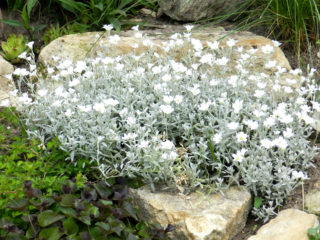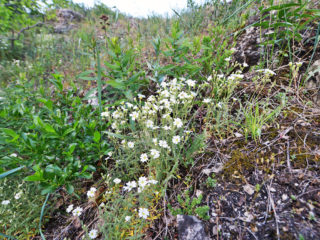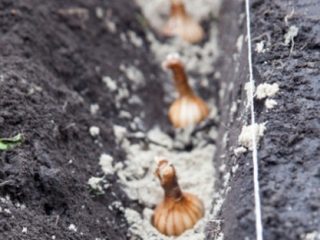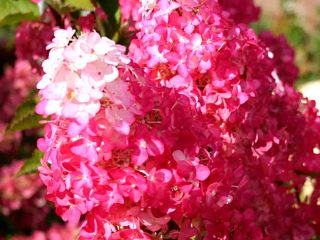Content
The common parsley, despite its unpretentious appearance, is often used by designers when creating various landscape compositions. Turfs of an unpretentious ground cover, covered with numerous snow-white flowers, blend harmoniously into the landscape, adding natural beauty to alpine hills, rockeries and mixborders in a natural style (naturgarten).
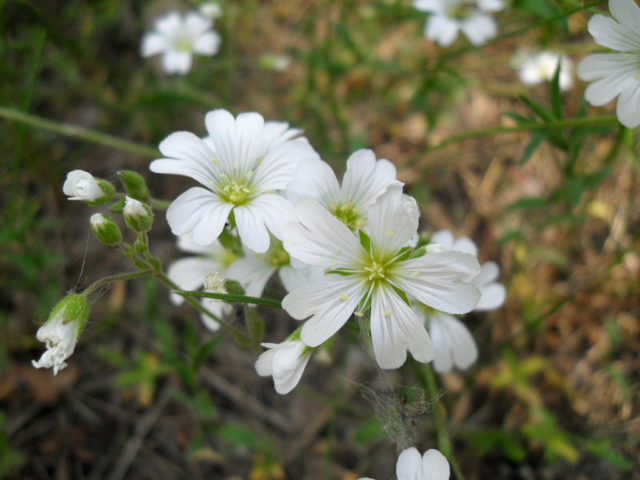
Cerastium flower most often with petals cut into thirds
Description and characteristics
Common parsley - lat. (Cerastium Holosteoides) belongs to the family. Cloves (Caryophyllaceae Juss). Other botanical names for the same species are soddy, bone-shaped or lanceolate (Cerastium fontanum). Cerastium is a herbaceous annual, biennial or perennial plant, 10-30 cm high with erect and vegetative creeping stems. The root system of the common chickweed is fibrous, widely branched, the roots are located close to the surface of the earth. The lower rounded or ovoid leaves are collected in a rosette. The stem foliage is greenish with a silvery tint, has a lanceolate shape, pointed at the end. The plates are located opposite. Leaf length 3 cm, width 1 cm.All parts of the plant are covered with glandular and simple hairs.
The flowering period of the common lily is long - from the end of April to October. The bush puts forward low corymbose loose inflorescences in the form of semi-umbrellas with 8-10 buds and green membranous bracts, the lower of which is leaf-shaped. White, bell-shaped flowers with a diameter of 5-6 mm are located on long stalks and have 5 petals, notched at the top. The stamens and pistil are shorter than the petals, the anther filaments are bare. The fruit is a cylindrical capsule with small brown (up to 0.8 mm) tuberculate seeds.
Common parsley is an extremely unpretentious plant, easily tolerates periods of drought, and has high frost resistance. It can grow on poor soils, without watering or fertilizing. Cerastium has a high immunity to diseases and is practically not damaged by pests. The common parsley is an aggressor plant; if you do not limit its expansion in width, after a few years the groundcover curtain reaches 80 cm in diameter, suppressing the flowers growing nearby.
Under natural conditions, the common chickweed grows on rocky, poor soils. When planted in fertile soil, it blooms less, increasing the green mass. It prefers to grow at higher elevations, in well-warmed places where there is no stagnation of water in spring and during periods of rainy weather. The plant loves bright places. A ground cover planted in partial shade stops blooming.
Common jasmine has medicinal properties. It contains tannin, rutin, beneficial flavonoids and organic acids.Decoctions and infusions of the herb are used in folk medicine for vitamin deficiency, skin rashes, conjunctivitis, and tumor neoplasms.
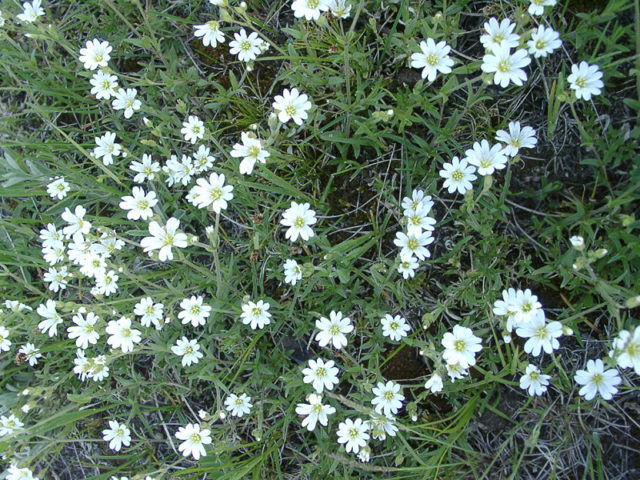
The flower forms a dense turf that is not afraid of even malicious weeds
Where does it grow
Common parsley is a cosmopolitan plant. Its natural distribution range covers the entire Eastern Europe, Transcaucasia, Siberia, Altai Territory and the Far East. The flower is found in pastures, meadows, clearings, and high banks of reservoirs. Growing in fields next to agricultural crops, the common carrion becomes a weed, competing with plantings for water and nutrients. The flower is capable of producing a large number of seeds.
Reproduction methods
Common jasmine propagates easily. Main methods:
- sowing seeds in the ground;
- growing from seeds through seedlings;
- dividing the bush.
Seeds of the common carrion are sown directly into the ground in the fall. Self-seeding of the crop often occurs. When growing seedlings, the grains are planted in March, the first shoots can be seen a week later. When two true leaves appear, the seedlings dive. Young bushes are planted in the ground at the beginning of summer. Dividing the clump of common parsley is carried out in spring or autumn with a sharp knife or shovel. The plant is cut into 2-3 parts with equal sections of roots and transplanted to a new location.
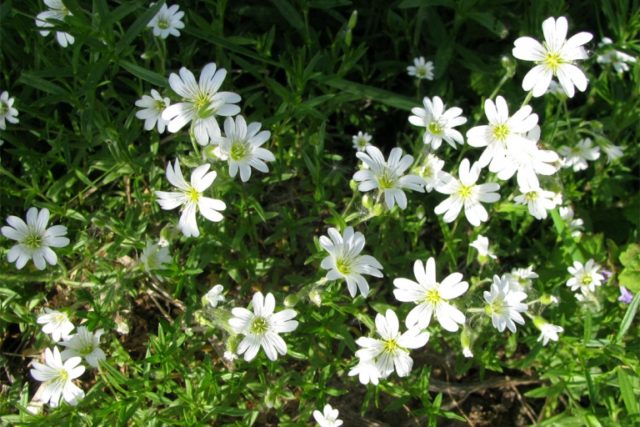
The common parsley has a long flowering period - from April to October.
Growing and care
The flower requires a minimum of attention. The moisture schedule is moderate; the plant can be watered only during periods of drought. Fertilizing is carried out during flowering; nitrogen fertilizers are used with caution.Whenever possible, loosen the soil around the bushes, trying not to damage the surface roots. The common weed is not afraid of weeds; the dense curtain suppresses their growth. Main events:
- pruning to give the plant a spherical shape and stimulate repeated waves of flowering;
- removal of dried flower stalks;
- periodic division of an overgrown bush.
Young immature plants are mulched with peat. Cerastium does not need shelter for the winter; under a layer of leaf litter or spruce branches the flower crop can dry out.
Pests and diseases
Common parsley is not affected by pests and is not susceptible to fungal and viral diseases. When grown in lowlands, it can suffer from physiological pathology - rotting of the root system. Causes:
- stagnation of water in the soil;
- excessive watering;
- growing on heavy clay soils;
- excess fertilizing with nitrogen fertilizers.
What plants does it go with?
The exceptional unpretentiousness of the common parsley, long-term flowering and the ability to create a dense, weed-free cushion from shoots have led to the widespread use of the plant in landscape design. The ground cover is planted in the foreground of mixborders, in the lower tier of hedges made of conifers, and borders are formed along the paths. Common parsley is suitable for growing in flowerpots and containers.
The flower can grow in crevices between stones with small areas of soil. Plants use this ability when arranging rock gardens, rockeries, and rock gardens.Common parsley goes well with bulbous plants, excluding small primroses, which are too weak to be adjacent to an aggressive plant. The ground cover looks great in compositions with rhizomatous irises, tulips, and different types of lilies.
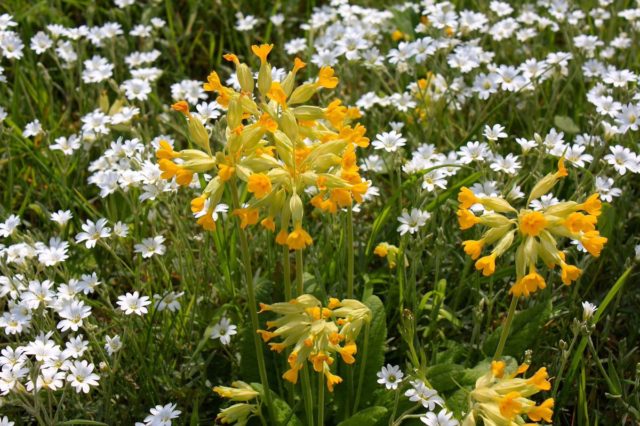
Snow-white flowers on thin stems highlight the bright colors of the perennial petals
Conclusion
Common parsley is an unpretentious plant that can be grown in any soil and does not require special skills. The flower reproduces easily, rarely gets sick, and is not damaged by parasitic insects. Proper pruning of the bush helps give the ground cover a beautiful spherical shape and allows it to be used in a variety of compositions that imitate the natural landscape.
